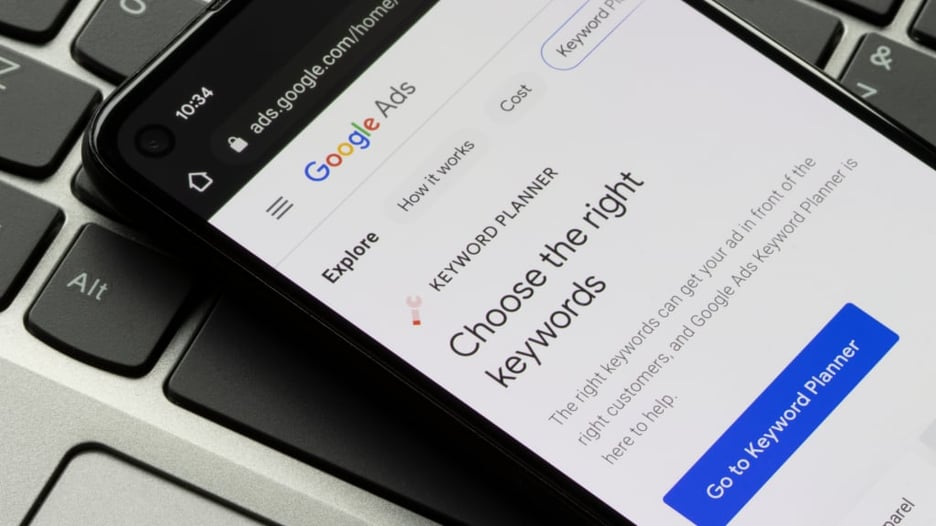Mobile PPC: Strategies For Targeting On-The-Go Consumers

Mobile phones are the most used devices to access the internet. Excluding tablets, mobile devices account for about 58.33% of web traffic in 2023 worldwide.
Mobile phones offer excellent convenience. As such, mobile pay-per-click (PPC) ranks as one of the most important factors driving paid traffic to a business. Therefore, by targeting mobile users, you capitalise on shoppers on the go.
But how do you approach mobile PPC correctly? The way users interact with websites and apps changes depending on the device they are using. Therefore, mobile PPC ads require a different strategy than other online ads. Here are some strategies for effective mobile PPC advertising:
1. Create mobile-optimised ads
Mobile users often have shorter attention spans and are more likely to be on-the-go or multitasking. Therefore, mobile ads must be concise and have compelling calls to action to grab attention and prompt action quickly.
They must also be visually appealing and easy to navigate on smaller screens. Experiment with mobile-specific ad formats, such as mobile carousel ads, app install ads, and video ads optimised for mobile screens. These formats can capture users’ attention more effectively on smaller screens.
Include a call to action (CTA) button to motivate users to take the next step. Whether it’s for making a purchase, requesting more information, or downloading an app, a strong CTA is essential in guiding users towards conversion.
Next, add relevant extensions to the ad, such as calls, emails, and location extensions. When people are looking for a service on the phone, there’s a high chance they’ll want to reach out to you. Having these extensions makes it easy for them to do so.
By following these optimisation tips, you can maximise the effectiveness and reach of your mobile PPC campaigns, generating better results and driving more conversions.
2. Use click-to-call extensions and call tracking
More than 60% of customers prefer calling to sending emails or texts when transacting. Calls allow for faster interaction between potential customers and your business. In mobile PPC, calls are a key conversion point, so it’s important to invest in high-quality leads and tracking strategies.
Take advantage of call-only campaigns. These campaigns do not have a landing page, so when a user clicks on the ad, their phone will automatically dial the business’s phone number. You can customise the campaign based on budget, demographics, and other specifics to target the right customers.
Once everything is set, you should use a call-tracking tool, which records the calls, tracks the source of the call and website sessions, and adds tracking numbers directly to your ads. With this data, you can qualify different prospects and tweak your next steps to drive conversions.
3. Use geotargeting
Location targeting allows you to define the geographic area where your ads will be shown. You can target specific areas such as countries, cities, neighbourhoods, or even a radius around a particular location. This precision helps you focus your advertising budget on users more likely to be interested in your products or services. Therefore, it increases the likelihood of conversions and maximises the return on ad spend.
Geotargeting capitalises on the growing trend of local search intent. Mobile users often search for products or services using location-specific queries, like ‘coffee shops near me’ or ‘plumbers in [city name].’ With location targeting, you can position your business as the solution when potential customers actively seek nearby services.
4. Create mobile-friendly landing pages
When clicked on, PPC ads lead potential customers to a certain product or service. So you need to optimise the landing pages. The first step is ensuring a fast page load speed. About 47% of users will leave a site when it takes more than two seconds. Visitors can be frustrated by product images that don’t load quickly, which can push them to abandon your site. One approach to improve the loading speed is compressing and optimising image sizes. The reduced file sizes help enable faster loading times.
You should also focus on the layout of your landing page on mobile phones. All the details should fit on one screen. To achieve this, ensure your landing page is responsive across all devices. This ensures your visitors don’t have to switch to another device to complete a purchase or get more information about your business.

Conclusion
Mobile PPC is one of the best ways to reach and convert-on-the-go consumers. With many people browsing the internet using their phones, targeting them gives your PPC ads an advantage. But with the right strategies, you can get this advertising model to work for you and increase sales.
Create mobile-friendly ads and landing pages, and use click-to-call extensions and geotargeting. You can check this page for more information about optimising your mobile PPC for the best results.
TAGS: